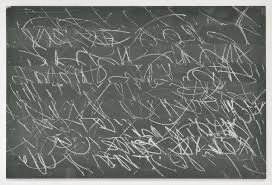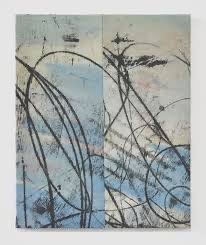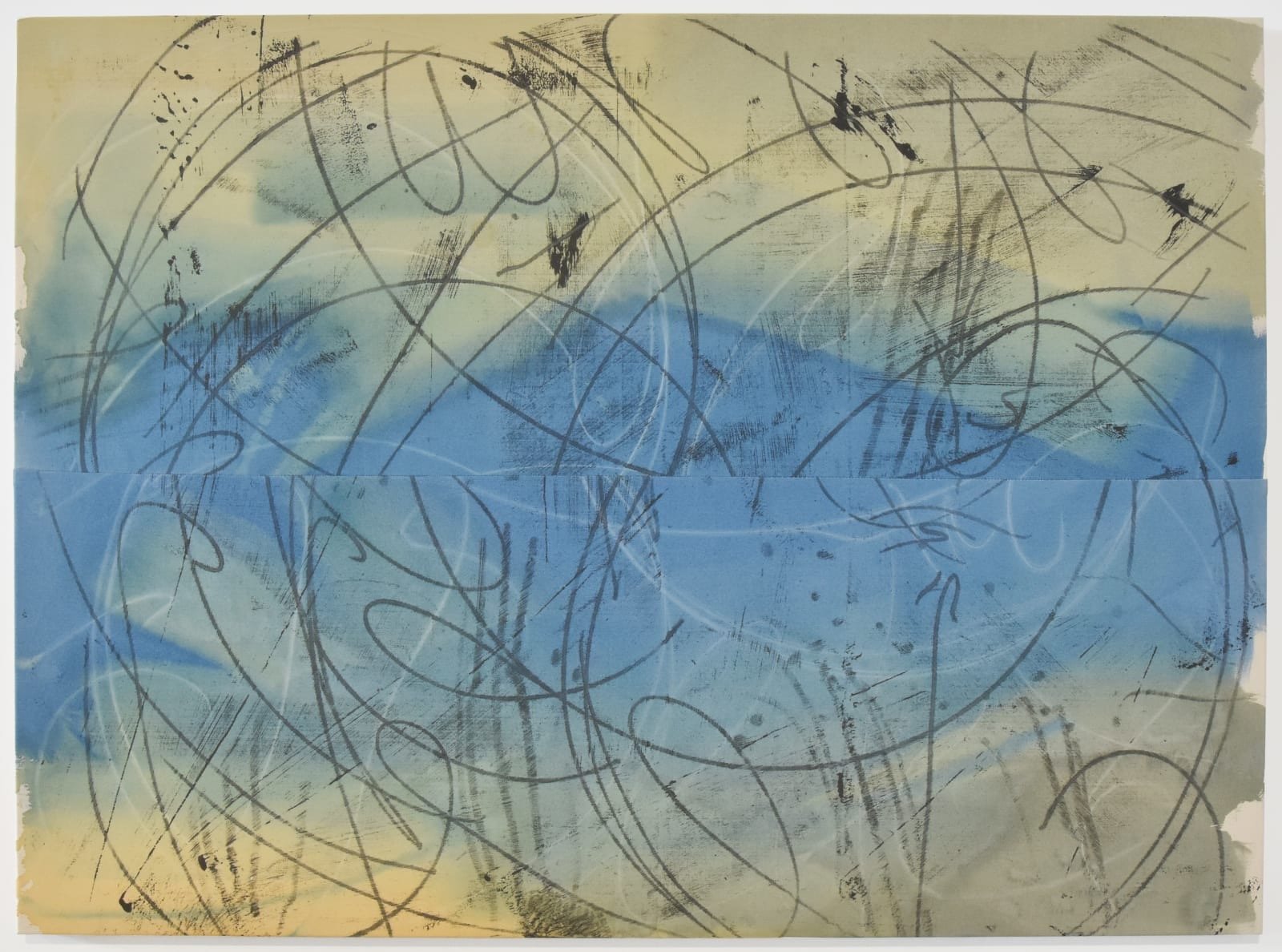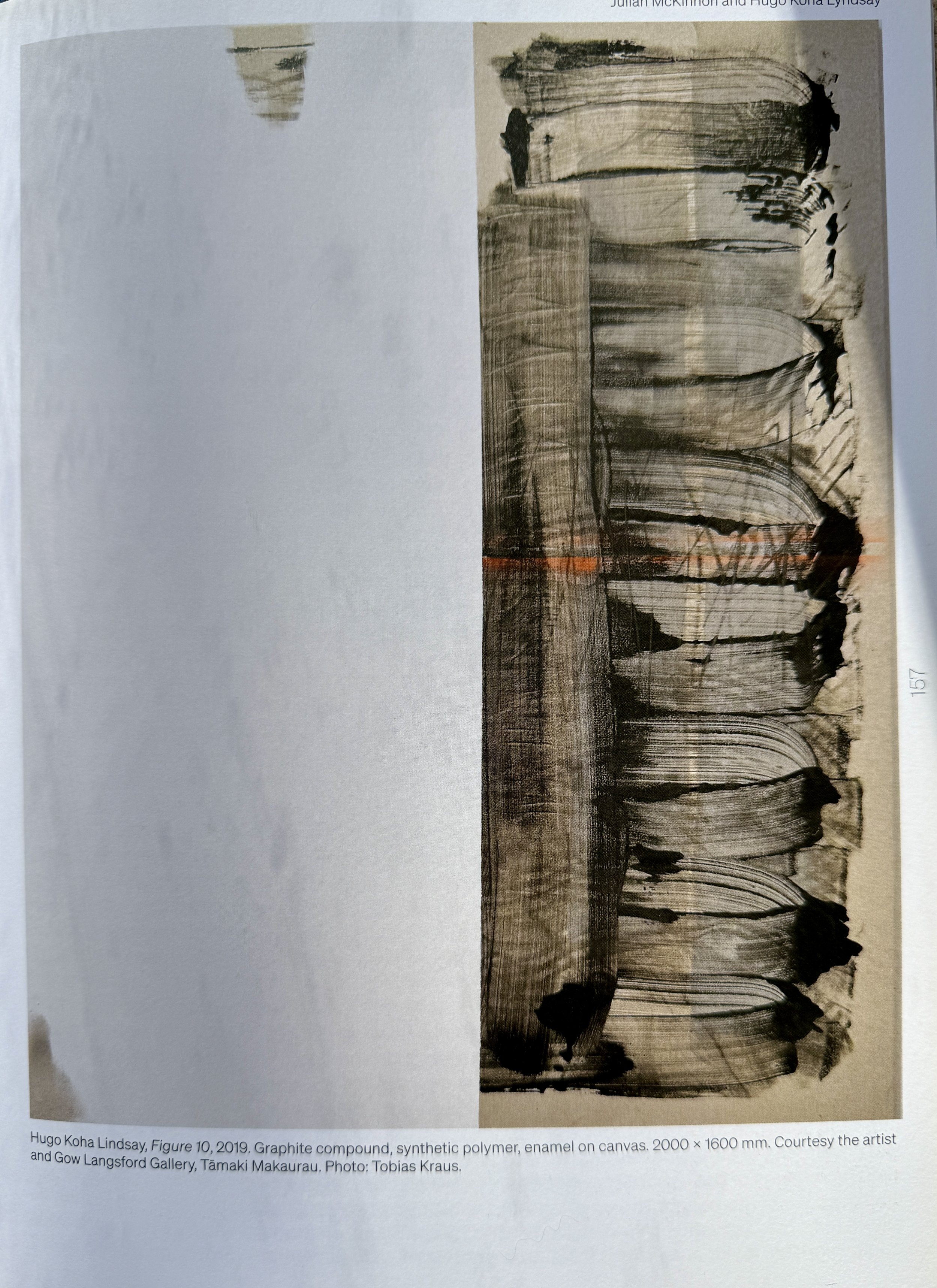The City and the Psyche: Painting Now - Hugo Koha Lindsay and Julian McKinnon
JMc: Linday’s work can be sparse in term of colour; shades of white, grey and expansive terrains of raw canvas dominate. Shock of bright colour = additional impact. Thick textural line, subtle brushing and sprayed layers. Indexes of folding and scrunching shown in taut surfaces - reveal production process. HKL’s visual language advanced by masking and cropping, operates in an area of tension between spontaneity and restraint.
Draws inspiration from urban spaces, council spray paintings on pavements, the frenetic layering of outdoor advertising. The gritty language of the city street.
“turning the fragmented energy and chaos of the city streets into a refined aesthetic. “ p150
HKL: painting abstracts or conceptualises a terrain of thought into an image.
HKL: I think of painting as an alternative form of cartography or a means to map a certain set of conditions whether that be phenomenological of aesthetic. Set up a framework. A set of rules. Floor-based practice, horizontal axis. Flat bed plane. I also look outside of a traditional painting context for materials or tools - I often use DIY tools . I am interested in experimental mark making. Kinds of mark making that exists outside the framework of of the visual arts.
Painting operating as a conduit - in which ideas are transmuted or filtered through. The idea of a conduit relates to a material and a process that contains many parts/ideas/histories that are interwoven. (p152)
JMc: Lindsay’s markings relate to people centred activities.
TAKE AWAYS: the mark making and how they tell the story of the urban. The indexes revealing the production process. ‘Spontaneity and restraint’ - the tension between these two states visible in the markings and then the cutting up and reassembling of the canvas. ‘Painting as cartography’ - the idea of mapping out onto canvas. And of course, the experimental mark making he explores, but I especially like the sewing together of off-set panels from an original work.
From Gow Langsford website:
Lindsay views abstraction as not separate from the realities of everyday life, but as a byproduct of the increasing abstraction of real-world processes, and the languages produced by them. Additionally, He is interested in painting as a means to interpret phenomenological experience, or the ways in which particular spaces might feel rather than appear.
Lindsay is interested in pursuing painting as a means to interpret the intermingling of macro and micro environments in daily experience. His artistic language adopts marks from the personal surroundings of his home and studio and from the city around him. A logic of palimpsest is evident in his paintings, where systems of accrual often take place through experimental mark making and open pictorial space. His canvases can be unstretched, cut, sewn, and re-stretched as he explores some of the processes of making that are usually disguised within a finished painting. These systems of accrual frequently create contradictory visual relationships, resulting in paintings that are interdisciplinary.
Sections of Lindsay’s paintings are often left raw, invoking a transitional state. Lindsay states, “The sewn paintings act as topographies – an informational surface of which territories are divided by physical boundaries for the activity of painting to occur.” This relates to his understanding of urban spaces, natural environments, weather systems, and bodies of water as exploratory subject matter for painting. His works could be considered ambient maps through their combination of open space with accrued marks. Lindsay retains an open-ended and dynamic relationship to painting, seeking to continually evolve his practice.






